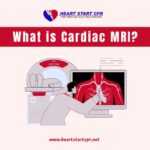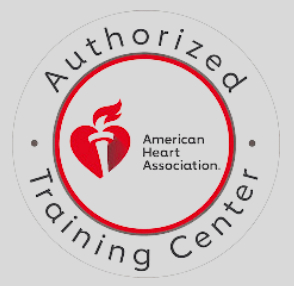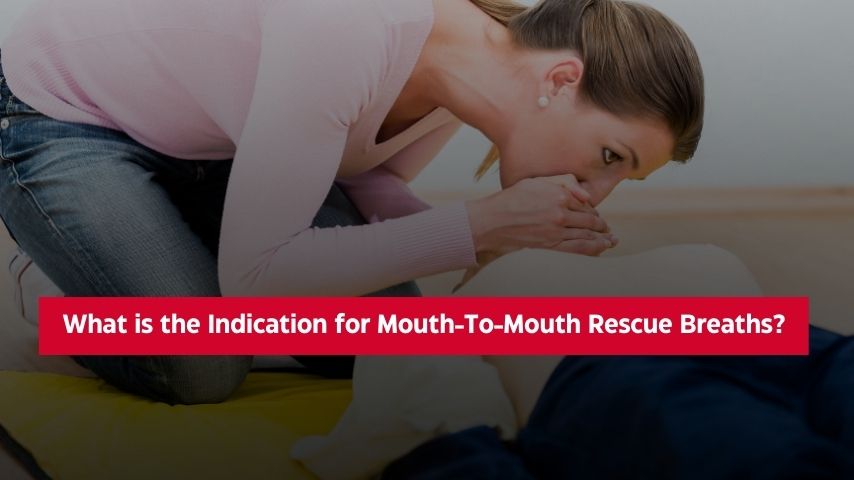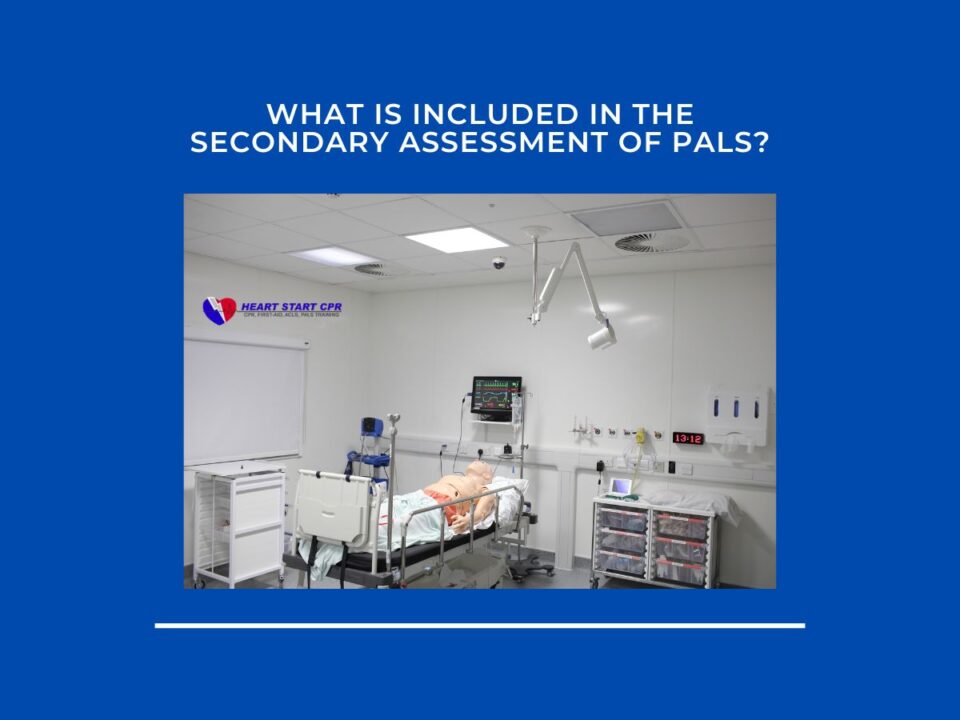
What is Cardiac MRI?
April 12, 2024
How is CPR Performed Differently When an Advanced Airway Is in Place?
May 9, 2024Performing mouth-to-mouth rescue breaths, also known as rescue breathing, is integral to cardiopulmonary resuscitation (CPR). This blog explores what is the indication for mouth-to-mouth rescue breaths and how this technique can save someone’s life if they have stopped breathing or are struggling to breathe. By directly delivering air from the rescuer’s lungs into the victim’s lungs, this life-saving procedure helps oxygenate the blood and sustain the person until emergency medical services (EMS) arrive.
According to the American Heart Association (AHA), brain damage can begin within 4-6 minutes after someone stops breathing. By providing rescue breaths, you can help prevent or delay this damage until emergency medical services (EMS) arrive.
The Importance of Mouth-to-Mouth Rescue Breaths
Mouth-to-mouth rescue breaths are a critical component of lifesaving first aid, as they help to maintain the flow of oxygenated blood to the brain and other vital organs until further medical assistance can be provided.
Here are some key reasons why mouth-to-mouth rescue breaths are so important:
Oxygenation: When a person’s breathing stops, their body does not receive the oxygen it needs to function. Rescue breaths help deliver oxygen directly to the lungs, ensuring that the blood remains oxygenated and can continue to circulate throughout the body.
Brain Preservation: The brain is particularly vulnerable to oxygen deprivation, and without prompt intervention, brain damage can occur within just a few minutes. Rescue breaths can help to maintain brain function and prevent long-term neurological consequences.
Increased Survival Rates: Studies have shown that the combination of rescue breaths and chest compressions (as part of CPR) can significantly increase the chances of survival for individuals experiencing cardiac arrest or other respiratory emergencies. The American Heart Association recommends that bystanders perform both rescue breaths and chest compressions when responding to a cardiac arrest. Learn how can you achieve a high chest compression fraction.
Versatility: Mouth-to-mouth rescue breaths can be used in a variety of emergencies, from drowning and choking to respiratory arrest and SIDS. This makes it a crucial skill for anyone to learn and be prepared to use in a crisis.
Empowerment: Knowing how to perform mouth-to-mouth rescue breaths can empower laypersons to take action and potentially save a life in an emergency. This knowledge can provide a sense of confidence and the ability to make a real difference in someone’s life.
What Are the Indications for Mouth-to-Mouth Rescue Breaths During CPR?
Recognizing the indication for mouth-to-mouth rescue breaths is vital in CPR scenarios requiring immediate intervention. Here are the key instances when mouth-to-mouth rescue breaths are commonly necessary:
1. Absence of Breathing
One of the primary indications for administering mouth-to-mouth rescue breaths is the absence of breathing in an individual. If a person is not breathing or is breathing irregularly, it is essential to provide rescue breaths to ensure that oxygen is reaching their lungs and circulating throughout their body.
2. Respiratory Distress
Individuals experiencing respiratory distress, such as gasping for air, wheezing, or struggling to breathe, may benefit from receiving mouth-to-mouth rescue breaths. By assisting their breathing efforts, you can help alleviate their distress and improve their oxygenation.
3. Cardiac Arrest
During a cardiac arrest, when the heart stops beating effectively, the body’s oxygen supply is compromised. Performing mouth-to-mouth rescue breaths as part of CPR can help maintain oxygen levels in the bloodstream and support vital organ function until advanced medical care can be provided.
4. Drowning or Suffocation
In cases of drowning, near-drowning, or suffocation, where the airway is obstructed or filled with water, performing mouth-to-mouth rescue breaths is crucial. By clearing the airway and providing oxygen, you can prevent further damage and increase the chances of survival.
5. Drug Overdose or Poisoning
Drug overdose or poisoning can lead to breathing difficulties or respiratory arrest, where the person may stop breathing altogether. Mouth-to-mouth rescue breaths are crucial in such cases to deliver oxygen to the lungs and maintain essential bodily functions until professional medical help arrives.
6. Severe Allergic Reactions (Anaphylaxis)
During severe allergic reactions like anaphylaxis, which can lead to swelling of the airways, the person may experience difficulty breathing or even stop breathing. Mouth-to-mouth rescue breaths can support oxygenation until emergency treatments such as epinephrine and antihistamines take effect.
7. Trauma
Trauma such as injuries to the chest or head, can cause respiratory distress or compromise. In cases where the person is unconscious or unable to breathe effectively due to trauma, mouth-to-mouth rescue breaths can help maintain adequate oxygen levels until definitive medical care is available.
8. Choking
Choking occurs when the airway is blocked, making normal breathing impossible. If attempts to clear the airway fail and the person becomes unresponsive, performing CPR in an unresponsive choking victim, including mouth-to-mouth rescue breaths, can provide oxygen directly to the lungs. This helps sustain vital functions until the obstruction is resolved or emergency help arrives.
Related Post: Proper Procedure for Delivering Rescue Breaths to an 8-year-Old Child
When Rescue Breaths Are Not Recommended
Rescue breaths are not recommended in certain situations, such as:
Contaminants Present: If the rescuer is aware of the presence of toxic or harmful substances in the victim’s mouth, performing rescue breaths could expose the rescuer to these contaminants.
Risk of Infection: In cases where the victim is known or suspected to have a contagious disease, administering rescue breaths without proper protection (such as a barrier device) could put the rescuer at risk of infection.
Obvious Signs of Life: If the victim is showing signs of breathing, such as coughing, gasping, or movement, rescue breaths may not be necessary. In such cases, it’s essential to monitor the victim closely and be prepared to provide assistance if their condition worsens.
Severe Trauma: In situations where the victim has sustained severe trauma to the head, neck, or chest, administering rescue breaths may worsen their condition or cause further injury. In such cases, it’s crucial to focus on other aspects of first aid, such as controlling bleeding or stabilizing the victim’s spine.
Ineffective: If the rescuer is unable to effectively perform rescue breaths due to lack of training or physical limitations, it may be safer to focus on chest compressions until professional medical help arrives.
Related Post: 5 Situations When You Do Not Perform CPR
How to Perform Mouth-to-Mouth Rescue Breaths
If you encounter a person who has stopped breathing, it’s crucial to act quickly and perform mouth-to-mouth rescue breaths. Here’s a step-by-step guide on how to do it:
Step 1: Check the Scene
Before initiating mouth-to-mouth rescue breaths, it’s crucial to ensure your safety and the safety of the victim. Check for any potential hazards or dangers in the environment, such as traffic, fire, or unstable structures. If the scene is safe, proceed to the next step
Step 2: Position the Victim
Gently lay the victim on their back on a flat surface, ensuring their head is in a neutral position. If there is any suspected spinal injury, take care to immobilize the neck and spine while maintaining an open airway.
Step 3: Open the Airway
To open the victim’s airway, place one hand on their forehead and gently tilt their head back, lifting the chin upward. This maneuver helps to align the airway and facilitate easier breathing.
Step 4: Check for Breathing
Lean down close to the victim’s face and look, listen, and feel for signs of breathing. Watch for chest rise and fall, listen for breath sounds, and feel for airflow against your cheek. If the victim is not breathing or is breathing irregularly, proceed to the next step.
Step 5: Pinch the Nostrils
With the victim’s airway open, use your thumb and index finger to pinch their nostrils closed. This prevents air from escaping through the nose during rescue breaths, ensuring that the oxygen you provide enters the lungs.
Step 6: Create a Seal
Take a deep breath and place your mouth firmly over the victim’s mouth, creating a tight seal. Ensure that your lips completely cover the victim’s mouth to prevent air leakage.
Step 7: Deliver the Breath
Blow into the victim’s mouth steadily and firmly, watching for the chest to rise as you provide the breath. Aim to deliver enough air to cause visible chest movement, as per the standard procedure of two rescue breaths, but avoid excessive force that could cause injury.
Step 8: Remove Your Mouth
After delivering the rescue breath, remove your mouth from the victim’s and allow their chest to fall naturally. This allows for passive exhalation and prepares the lungs to receive the next breath.
Step 9: Repeat
Continue to deliver rescue breaths at a rate of one breath every 5-6 seconds, alternating with chest compressions if performing CPR. Aim to provide a total of two breaths for every 30 compressions, maintaining a steady rhythm until help arrives or the victim begins breathing on their own.
Conclusion
Performing mouth-to-mouth rescue breaths is a crucial lifesaving intervention when part of effective CPR. Be sure to assess properly for breathing difficulty first through the look, listen, and feel technique before starting compressions and breaths as needed. Deliver rescue breaths slowly and sufficiently while maintaining proper form and techniques. Understand when changes must be made or when breaths cannot be given due to safety issues. With prompt CPR including rescue breathing when indicated, oxygen delivery can help sustain critical organs until emergency medical aid arrives to save the individual in cardiac arrest. For hands-on training in rescue breathing and CPR, enroll in CPR or BLS classes at Heart Start CPR today. These courses cover essential skills in CPR. Join us and be prepared to respond confidently in emergencies and potentially save lives
FAQs on Mouth-to-Mouth Rescue Breaths
What if I’m uncomfortable with mouth-to-mouth contact?
If you’re uncomfortable with mouth-to-mouth contact, prioritize hands-only CPR (continuous chest compressions) until emergency medical services arrive. Hands-only CPR is better than no CPR at all.
What if I’m not trained in CPR or rescue breaths?
If you are not trained in CPR or rescue breaths, you can still take action to help someone in an emergency. Call emergency services immediately and, if possible, begin chest compressions. Dispatcher-assisted CPR instructions can also guide you through the process until emergency responders arrive.
Can I perform rescue breaths on a child or infant?
Yes, the technique for performing rescue breaths on a child or infant is slightly different, but it is still an essential life saving skill. When providing rescue breaths for a child or infant, use a gentler approach and ensure that the breaths are smaller and more gentle to avoid injury.
Can I get sick from performing mouth-to-mouth rescue breaths?
There is a small risk of disease transmission when performing mouth-to-mouth rescue breaths, but the benefits of providing this lifesaving intervention generally outweigh the risks. Proper use of personal protective equipment, such as a face shield or pocket mask, can help to minimize the risk of disease transmission.
How often should I perform rescue breaths?
The recommended rate for rescue breaths is one breath every five to six seconds, or 10-12 breaths per minute, for a person who has a pulse but is not breathing. If the person is in cardiac arrest, the rescue breaths should be alternated with 30 chest compressions, following the standard CPR protocol.






